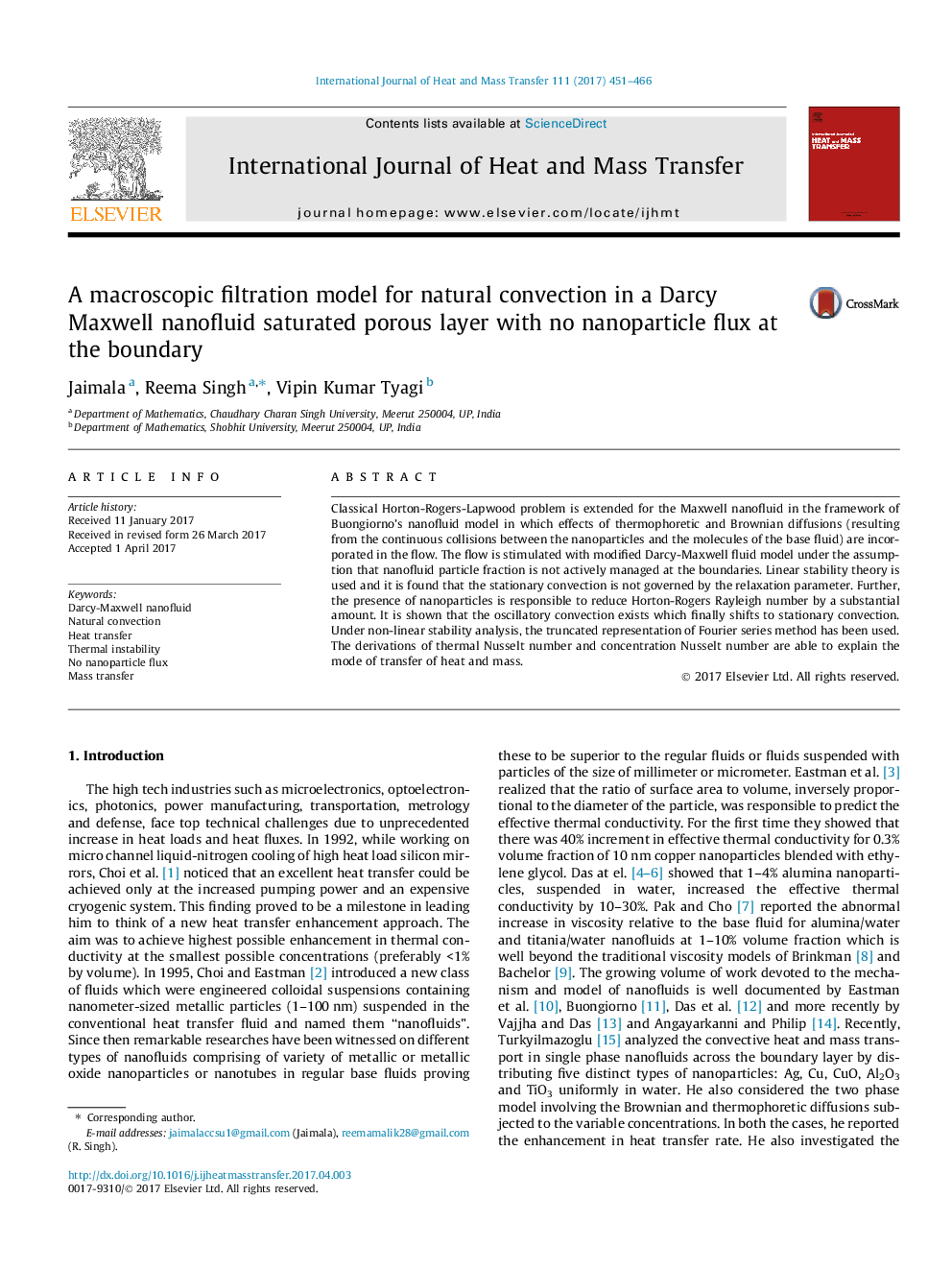| Article ID | Journal | Published Year | Pages | File Type |
|---|---|---|---|---|
| 4994088 | International Journal of Heat and Mass Transfer | 2017 | 16 Pages |
Abstract
Classical Horton-Rogers-Lapwood problem is extended for the Maxwell nanofluid in the framework of Buongiorno's nanofluid model in which effects of thermophoretic and Brownian diffusions (resulting from the continuous collisions between the nanoparticles and the molecules of the base fluid) are incorporated in the flow. The flow is stimulated with modified Darcy-Maxwell fluid model under the assumption that nanofluid particle fraction is not actively managed at the boundaries. Linear stability theory is used and it is found that the stationary convection is not governed by the relaxation parameter. Further, the presence of nanoparticles is responsible to reduce Horton-Rogers Rayleigh number by a substantial amount. It is shown that the oscillatory convection exists which finally shifts to stationary convection. Under non-linear stability analysis, the truncated representation of Fourier series method has been used. The derivations of thermal Nusselt number and concentration Nusselt number are able to explain the mode of transfer of heat and mass.
Related Topics
Physical Sciences and Engineering
Chemical Engineering
Fluid Flow and Transfer Processes
Authors
Jaimala Jaimala, Reema Singh, Vipin Kumar Tyagi,
